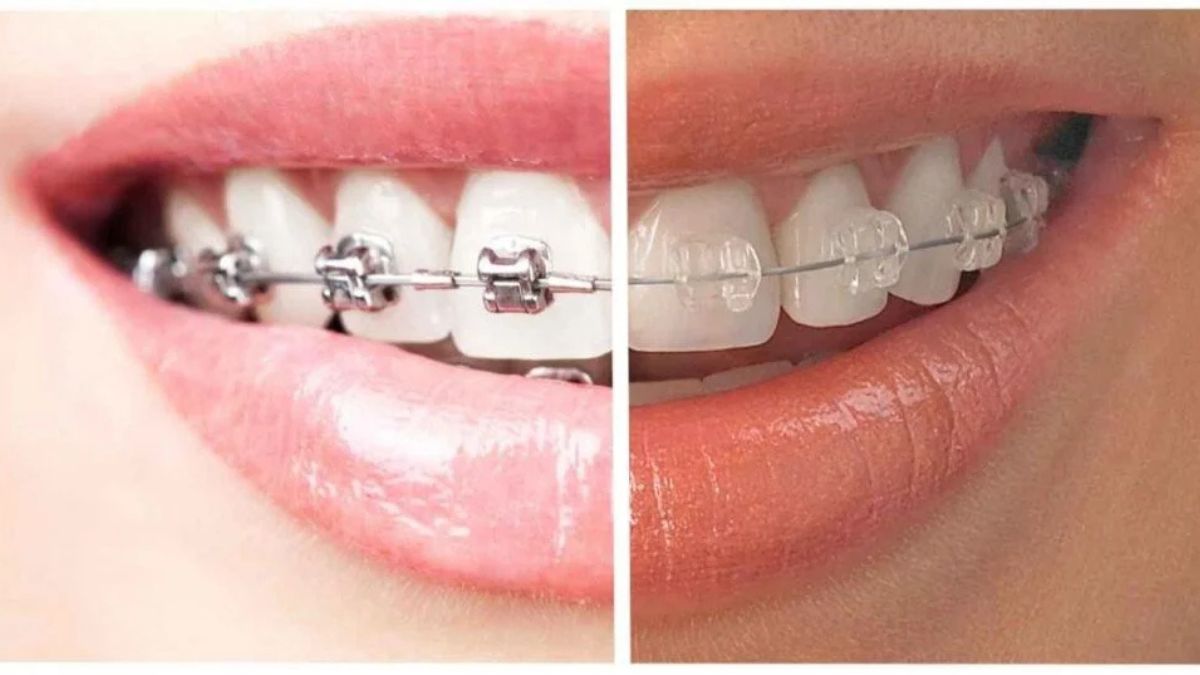Health
The Journey to a Perfect Smile: Understanding Different Types of Braces

Types of Braces: An Overview
Embarking on the journey to a perfect smile can feel like a monumental task, especially when confronted with the myriad options in orthodontics today. The evolution of braces has offered individuals an array of choices that cater to specific needs and preferences. Whether seeking the functional reliability of affordable braces or opting for modern alternatives that blend style and discretion, there’s a solution designed for everyone. These options allow individuals to align their goals with their personal and financial circumstances, making dental care more accessible and adaptable.
Understanding how braces function is crucial for those entering the world of orthodontic treatment. Essentially, braces apply gentle, continuous pressure over time to guide teeth into an optimal position. As one embarks on this alignment journey, the surrounding bone remodels to accommodate the changing structure of the teeth. In the end, this gradual realignment improves dental health and creates a more appealing smile by addressing problems including crowding, spacing, and over or underbites.
Traditional Metal Braces
Traditional metal braces remain a stalwart choice within orthodontics, and they are known for their robustness and efficacy in teeth straightening. Composed of high-grade stainless steel, they are the conventional choice for many and have stood the test of time. Often recommended by orthodontists for their precision in addressing a range of dental issues, metal braces are particularly beneficial in handling complex dental cases that might be resistant to other treatment forms. It’s their unparalleled strength that often makes them the first line of treatment, especially for children and teenagers.
The visibility of metal braces, while sometimes seen as a disadvantage, is counterbalanced by their affordability. They provide a durable solution that is often less expensive than more aesthetically focused options. However, those who prioritize aesthetics might find the noticeable nature of metal braces less appealing. Maintaining excellent oral hygiene is paramount with metal braces to prevent food particles from becoming trapped, which can trigger plaque build-up and tooth decay.
Ceramic Braces: Aesthetic Choice
Ceramic braces are an aesthetically pleasing option for individuals concerned with appearance during treatment. They are a common option for people seeking a more understated appearance because they are made of a translucent substance that complements the natural color of teeth. They’re especially favored among teenagers and adults who require the effectiveness of traditional braces but are conscious about the metal’s visibility.
While boasting significant benefits concerning visual appeal, ceramic braces typically come with a higher price tag. Additionally, they are typically larger than their metal counterparts and can contribute to gum irritation if not well-maintained. Despite these potential challenges, the advantages of ceramics — especially around social and professional settings — continue to make them an appealing option for many.
Lingual Braces: Hidden Aligners
Lingual braces provide the unique benefit of being entirely out of sight. Positioned on the back side of the teeth, they offer all the functionalities of traditional braces without the visible appearance. This makes them highly appealing to adults whose work might involve public speaking or media visibility, where aesthetics play a crucial role.
However, lingual braces are not without their challenges. They tend to be more expensive due to the precise customization required for each tooth. Initially, they might also affect speech and demand a period of adjustment. Moreover, cleaning can be more challenging due to their unseen placement. Despite these issues, their ability to offer invisible treatment keeps them as a preferred option for those specific about visual concealment.
Clear Aligners: Modern and Convenient
Clear aligners, like Invisalign, represent the cutting-edge of orthodontic treatment, combining discretion with convenience. These aligners are created from transparent plastic, fitting snugly over the teeth and progressively guiding them into place. The appeal of aligners lies in their removability, enabling users to eat their favorite foods without restrictions and maintain normal oral hygiene routines.
Though offering immense advantages, clear aligners may pose challenges, especially concerning cost. They tend to be priced higher than both metal and ceramic braces and are not always suitable for more complex dental issues. They demand a level of commitment from users as they must be worn for the majority of the day to be effective. Nevertheless, their advantages make them ideal for individuals leading active lifestyles or seeking an entirely discreet treatment option.
Deciding on the Best Option
Choosing the ideal type of braces involves evaluating various factors, from personal needs to practicality. Considerations such as age, lifestyle constraints, the complexity of dental issues, and financial budget play crucial roles in decision-making. Consultation with an orthodontic professional is vital to ascertain the most suitable treatment plan tailored to individual circumstances.
Understanding why dental braces are necessary can provide deeper insights into making informed choices, as explained by resources like MedicineNet. Such guidance helps reduce anxiety and empowers individuals to embark confidently on their journey to a healthier smile.
Conclusion: Embrace the Path to a Confident Smile
Electing the right kind of braces is a personal journey, and each decision brings a step closer to achieving the desired smile. Whether opting for the resilience of metal braces or the subtlety of clear aligners, each form offers benefits tailored to individual requirements. Armed with information and professional advice, individuals can embark confidently on the path to improved oral health and an attractive smile. Embrace the transformation and look forward to the confidence and joy that a perfect smile brings into everyday life.
Health
Understanding the Role of Disinfectants in Home Cleaning

Introduction to Disinfectants
Disinfectants have become a household staple, transforming modern cleaning routines. Unlike general cleaners that remove dirt, disinfectants are engineered to destroy bacteria and viruses living on hard surfaces. With the rise of public health awareness, products, and services are drawing attention to better home hygiene practices. The focus on cleanliness has led many to seek resources supporting smarter routines, such as Sparkulous, which offers valuable insights for maintaining a healthier home. The spotlight on disinfectants highlights their importance for families looking to maintain healthier indoor environments, especially when illness can spread rapidly within homes.
Recent times have seen a dramatic increase in surface disinfection, spurred by concerns over contagious diseases. According to CDC guidelines on disinfection, proper use of household disinfectants is crucial to breaking the chain of transmission for harmful pathogens. These products are essential for reducing the microbial burden on commonly touched surfaces, such as doorknobs, countertops, and bathroom fixtures.
Types and Mechanisms of Disinfectants
Disinfectants are available in various formulations, each proven to target specific microorganisms. Common options include alcohol-based sprays, bleach solutions, hydrogen peroxide, and quaternary ammonium compounds. These agents disrupt pathogens’ outer membranes or proteins, rendering them inactive within minutes. The EPA’s guide to approved household disinfectants provides a comprehensive list of products effective against various viruses and bacteria. Different surface types and application methods further impact how well these disinfectants perform.
Benefits of Using Disinfectants in the Home
Incorporating disinfectants into a regular cleaning regimen can provide measurable health benefits. They help reduce the risk of common illnesses, especially in busy homes with children, elderly residents, or immune-compromised individuals. Doctors and infection control experts recommend targeted disinfection in kitchens and bathrooms, where microbial contamination is most likely. A routine that includes effective disinfection supports the well-being of everyone in the home while minimizing cross-contamination from objects like phones, light switches, and remote controls.
Safe and Proper Use of Disinfectants
Effectiveness depends as much on correct use as on product selection. Every disinfectant comes with specific instructions regarding dilution, application, and contact time—the time the product must remain on the surface to achieve a complete kill. Following these directions can leave dangerous residues or even foster disinfectant-resistant microbes. Protective gloves, good ventilation, and storage away from children or pets are all vital safety steps. Keeping these basics in mind ensures maximum germ control with minimum risk to household members.
Integrating Disinfectants with Regular Cleaning
Disinfectants work most efficiently when applied after an initial cleaning to remove dust and grime. Cleaning first helps expose germs that may hide beneath visible dirt. Households benefit from setting a routine—wiping down high-touch surfaces daily and scheduling more thorough disinfections weekly. Using microfiber cloths, color-coding cleaning supplies, and regularly updating products ensures continued efficacy and hygiene.
Sustainable and Health-Conscious Choices
Awareness of environmental impacts and sensitivities has prompted many to seek disinfectants with safe, bio-based ingredients. It’s possible to balance hygiene with green practices by selecting EPA-approved products labeled as biodegradable or low in volatile compounds. Opting for sustainable packaging and responsible disposal keeps the home clean and lessens the overall environmental burden.
Staying Informed and Updated
Recommendations for best cleaning practices continue to evolve as science advances. Staying updated with resources such as the CDC or EPA ensures that chosen products are current and effective against newly emerging pathogens. Reviews of household routines and product lists, conducted a few times a year, help families keep pace with this changing landscape and make the best choices for wellness and comfort.
Health
How Provider Documentation Habits Must Evolve with CMS HCC V28

Shifting from CMS HCC V24 to V28 exposes every shorthand, autopopulated field, and copy-forward note that once slid through unnoticed; what felt “good enough” last year can now drain revenue and put compliance at risk. Providers who tighten their documentation today won’t just protect margins—they’ll give care teams clearer clinical stories to guide treatment tomorrow.
Old Habits That Hurt Under V28
Many clinicians still lean on boilerplate templates, partial diagnoses, or problem lists left to gather dust. Under the new model, a missing stage, acuity, or relationship word can strip an entire HCC from the claim. Multiply that gap across panels of chronic-disease patients, and small oversights grow into budget shocks.
Specificity Is the New Baseline
Version 28 rewards charts that state, for example, “Stage 3 chronic kidney disease secondary to diabetes with neuropathy” instead of “CKD.” That extra precision not only earns rightful risk weight but also guides population-health teams toward timely interventions. Adding a single qualifier may take five seconds, yet it prevents hours of coder queries and potential denials later.
Real-Time Prompts Beat Retro Queries
Relying on month-end chart review means the encounter is cold, memories have faded, and clinicians face another inbox full of clarifications. Lightweight, context-aware prompts inside the EHR nudge providers while the visit is still top of mind—“Add insulin-use status?” or “Specify heart-failure class?”—turning the note into a living clinical document rather than a rushed billing artifact.
Shared Dashboards Turn Data into Coaching
When coders, clinicians, and quality leaders view the same metrics—query turnaround, specificity rates, risk-score variance—blame shifts to collaboration. A weekly ten-minute huddle highlighting one high-impact documentation tip turns dry policy into actionable advice and keeps teams aligned on both financial and care outcomes.
Quick Wins You Can Start Tomorrow
Begin with high-variance specialties like nephrology and cardiology, where missed qualifiers cost the most. Update templates to remove outdated language, add prompts for stage and complication, and run a dual-scoring test on a recent month’s encounters to spot the biggest drops. Celebrate the first clinic that cuts their query backlog in half; peer recognition moves culture faster than any memo.
Measure What Matters Long Term
Track first-pass claim acceptance, denial rates linked to documentation, and downstream quality metrics such as avoidable readmissions. When leaders see improved patient outcomes traveling hand-in-hand with healthier RAF scores, they allocate more time and resources to sustain the habit change.
Conclusion
Progress from transactional note-taking to purposeful storytelling also elevates Outpatient CDI.
Health
The Art and Science of Massage Therapy: Techniques and Benefits

Introduction
Massage therapy, weaving together ancient tradition and modern science, is a testament to holistic healing. Across the globe, it has been cherished for centuries as more than just a moment of indulgent relaxation. Beyond its intricate maneuvers lie layers of physiological and psychological benefits that, when applied effectively, resonate with healing energy. Massage therapy encompasses techniques that enrich overall well-being, from enhancing bodily functions to stabilizing emotional health. This narrative urges understanding the therapeutic practices involved, shedding light on their artistry and scientific foundation.
The Many Techniques of Massage Therapy
Diversity in techniques characterizes massage therapy, each with distinct attributes targeting varied objectives. Among the most popularly practiced forms is the Swedish massage, revered for its smooth, flowing strokes that glide over the skin, efficiently elevating circulation and easing muscle stiffness. This technique is ideally suited to those grappling with stress, as it engages the body’s relaxation response through gentle manipulations. In contrast, the deep tissue massage delves into the body’s deeper muscle structures. It meticulously alleviates chronic muscle tension, often integral for individuals recovering from injuries or mitigating persistent muscular discomfort.
Additionally, sports massage is a specialized technique focusing on muscles commonly stressed by athletic activity. This form of massage depends on breaking down muscular knots, enhancing flexibility, and aiding recovery by stimulating blood flow to targeted areas. On a more sensory note, aromatherapy massage involves the integration of essential oils into the treatment, amplifying the emotional and physiological benefits while enveloping the client in soothing aromatic scents.
Skilled massage therapists play a critical role in applying these techniques. Their touch is informed by an intimate understanding of human anatomy and a practiced precision that ensures effectiveness and safety. They are adept at customizing each session to the client’s unique needs, optimizing therapeutic outcomes while ensuring that the treatment aligns harmoniously with the individual’s health profile and goals.
The Benefits of Massage Therapy
Unraveling massage therapy’s benefits reveals a tapestry of health improvements that extend far beyond the visible relaxation it elicits. On a physical level, regular massage sessions can dramatically alleviate pain, often acting as a complementary treatment for managing conditions like fibromyalgia and arthritis. Massage enhances blood circulation, facilitating nutrient delivery to tissues, promoting recovery, and reducing blood pressure. Furthermore, massage improves joint mobility, making it indispensable for those suffering from restricted movement or recovering from joint-related injuries.
The mental benefits of massage are equally profound. Stress, which is recognized as an omnipresent adversary in today’s fast-paced world, is substantially diminished through regular massage therapy. The treatment’s ability to lower cortisol levels while simultaneously boosting endorphin levels helps combat anxiety and depression and encourages improved mood and relaxation. As such, people often find improved sleep patterns and heightened mental clarity following massage treatments. These benefits foster holistic well-being, reinvigorating the mind and body.
Professionals trained in massage therapy bring their technique and a holistic understanding that includes lifestyle impacts. They help clients develop strategies that incorporate massage into broader wellness practices. Individuals can effectively address and navigate specific health challenges through tailored massage therapy plans by opting for such professional guidance. Learn more about massage and chiropractic care in Denver to explore how these treatments can support your overall health and wellness. Both therapies work synergistically to enhance physical mobility, alleviate pain, and promote mental relaxation. By integrating massage and chiropractic care into your routine, you can take a proactive approach to maintaining long-term health and vitality.
The Importance of Professional Guidance
While the allure of a DIY approach to massage might tempt some, the nuanced expertise of professional massage therapists remains unparalleled in delivering tangible health benefits. Trained therapists possess a profound understanding of anatomy, the intricate placement of muscles, and the network of pressure points that govern energy flow within the body. Their expertise is critical when customizing treatments suited to individual needs, especially when addressing complex health conditions. Professionals are trained to adjust massage techniques according to their clients’ unique physiological responses, ensuring an optimized therapeutic experience. They can identify areas that require particular attention and apply targeted techniques that provide maximum benefit while maintaining the client’s safety. The tactile intuition of experienced massage therapists, developed through years of practice, is something that self-administration cannot match.
In addition to their hands-on skills, therapists provide invaluable guidance on incorporating regular massage into one’s lifestyle, advising on frequency and technique variations that will yield the best results. This emphasizes the importance of seeking qualified professionals to ensure that massage therapy is effective and safely executed, avoiding the pitfalls that inexperienced administration might invite.
Conclusion
Massage therapy, rich in history and backed by science, offers a uniquely powerful avenue for fostering health and vitality. Its diverse techniques act as a symphony, addressing many physical and emotional needs that enhance the overall quality of life. Engaging with professional massage therapists ensures that individuals can unlock the full potential of massage, experiencing genuine therapeutic benefits safely and effectively. By trusting in the skilled hands of professionals, massage therapy manifests as an art that nurtures, a science that heals and a practice that enriches life’s journey toward holistic well-being.
-

 GENERAL6 months ago
GENERAL6 months agoFrom Fan Art to Original Works: The Diversity of doujindesu Creations
-

 Entertainment3 months ago
Entertainment3 months agoEnchantment & Excitement: Crafting Unforgettable Event Experiences
-

 GENERAL4 months ago
GENERAL4 months agoEngland Business Visa Requirements for American and International Citizens in 2025: A Guide for Entrepreneurs
-

 GENERAL2 months ago
GENERAL2 months agoCrossword Conundrum: The Significance of vault opener nyt crossword
-

 GENERAL2 months ago
GENERAL2 months agoExploring the World of nhentai.nef: A Comprehensive Guide for New Users
-

 Health7 months ago
Health7 months agoDiscovering gel ooru: The Ultimate Guide to This Unique Traditional Craft
-

 GENERAL5 months ago
GENERAL5 months agoLatest Trends in Men’s and Women’s Jackets for the Upcoming Season
-

 GENERAL7 months ago
GENERAL7 months agoWhy raterpoint is Revolutionizing Customer Feedback
